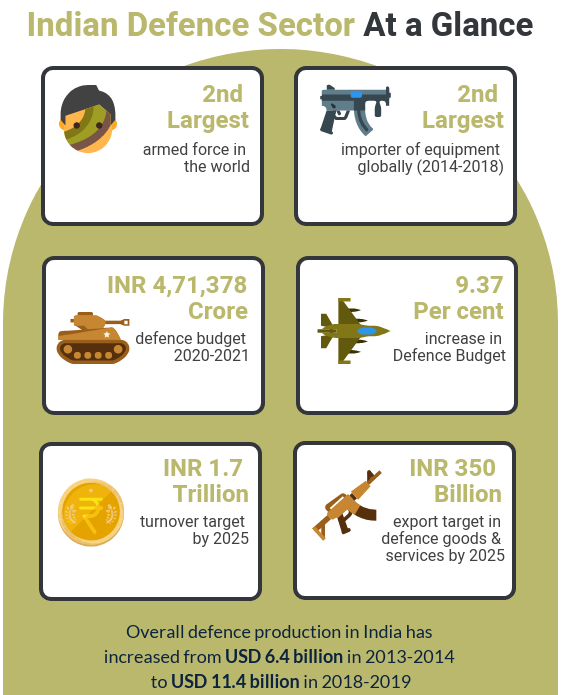
Context
- In a significant stride towards self-reliance and technological advancement, the Indian Army has indigenously developed a secure mobile ecosystem named SAMBHAV (Secure Army Mobile Bharat Version).
Key Details:
- This end-to-end secure mobile ecosystem operates on cutting-edge 5G technology and aims to provide secure communication with instant connectivity on the move.
- The SAMBHAV ecosystem has been developed in close collaboration with national centres of excellence from academia and industry.
- Recognizing the vulnerability of mobile networks to eavesdropping, the ecosystem employs a network-agnostic approach to ensure information security.
- It leverages the potential of indigenous public cellular networks and incorporates 5G-ready handsets with multi-tier encryption.
- The Indian Army is propelling itself towards an era of transformation in 2023, embarking on a journey to reshape its operational processes and capabilities. This ambitious endeavour is a crucial step towards realising the nation's vision of Atmanirbharta (self-reliance) in defence.
Facts:
| The Indian Defence sector, the second largest armed force is at the cusp of revolution. The Government has identified the Defence and Aerospace sector as a focus area for the ‘Aatmanirbhar Bharat’ or Self-Reliant India initiative, with a formidable push to establish an indigenous manufacturing infrastructure supported by a requisite research and development ecosystem. |
- In the Union Budget 2023-24, the Capital Allocations for modernisation and infrastructure development of the Defence Services have been increased to INR 1,62,600 Cr representing a rise of 6.7% over FY 2022-23. The industry gets INR 5.94 Lakh crore in Budget 2023-24, a jump of 13% over the previous year.
- The Ministry of Defence has set a target of achieving a turnover of INR 1.75 lakh crore in aerospace and defence Manufacturing by 2025, which includes exports of INR 35,000 crore.
- Till April 2023, a total of 606 Industrial Licences have been issued to 369 companies operating in Defence Sector.
- India has earmarked 75% of its defence capital procurement budget, equivalent to approximately INR 1 lakh crore, for domestic industries in FY 2023-24. This is a significant increase from the 68% that was allocated in the previous fiscal year, 2022-23.
- The announcement was made by the country’s Minister of Defence, Rajnath Singh, at the Bandhan ceremony of the 14th Aero India in Bengaluru on 15th February 2023. This move is aimed at enhancing the country’s defence sector, decreasing import dependency, and achieving self-reliance in the sector.
MARKET SIZE
- According to the global power index, the Indian defence sector ranks fourth in terms of firepower with a score of 0.0979 (with 0.0 being the perfect score).
| The Indian government has set the defence production target at US$ 25 billion by 2025 (including US$ 5 billion from exports by 2025). India is one of the world’s biggest defence spenders with a total outlay of Rs. 5.25 lakh crore (US$ 66 billion), accounting for 13.31% of the total budget and indicating an increase over the budget estimates of 2021-22 by Rs. 46,970 crores (US$ 5.9 billion). |
- India’s military spending of US$ 76.6 billion ranked third highest in the world in 2021. This was up by 0.9% from 2020 and by 33% from 2012.
- The value of defence production in the country crossed Rs. 1 lakh crore (US$ 12 billion) for the first time on the back of key reforms to spur growth in the sector that holds vast potential.
- The figure stood at Rs. 1,08,330 crore (US$ 13.07 billion) in FY23 compared to Rs. 95,000 crore (US$ 11.47 billion) in FY22 and Rs. 54,951 crore (US$ 6.63 billion) five years ago.
- India’s defence import value stood at US$ 463 million for FY20 and US$ 469.5 million in FY21. India targets to export military hardware worth Rs. 35,000 crore (US$ 5 billion) in the next five years.
- As of 2019, India ranked 19th in the list of top defence exporters in the world by exporting defence products to 42 countries. Defence exports in the country stood at Rs. 15,920 crore (US$ 1.94 billion) in 2022-23.
- Defence exports grew by 334% in the last five years and India now exports to over 75 countries due to collaborative efforts.
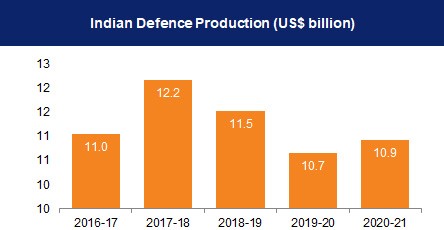
RECENT DEVELOPMENT/INVESTMENTS
- As of July 31, 2023, 393 startups/MSMEs/individual innovators have been engaged and 270 contracts have been signed.
- Indian and American startups will now be able to co-develop and co-produce advanced technologies, including in areas of space artificial intelligence, under the India-United States Defence Acceleration Ecosystem (INDUS-X).
- To promote indigenous design and manufacturing, funds have also been earmarked for procurement from indigenous sources.
- For FY24, funds have been earmarked in the ratio 67.75:32.25 between Domestic and Foreign procurement in the Capital Acquisition Budget of the Ministry of Defence (MoD).
- In addition, the MoD has also directed spending an amount of Rs. 1,500 crore (US$ 181.1 million) towards procurement from start-ups.
- The 10th meeting of the Sub Committee on Military Cooperation between India and Malaysia was held in New Delhi on July 27, 2023.
- During the meeting, the existing defence cooperation between the two countries both sides explored effective and practical initiatives to further expand the bilateral defence engagements.
- The 8th India-Australia Defence Policy Talks (DPT) was held at Canberra in Australia on July 24-25, 2023. During the Defence Policy talks, both sides reviewed the bilateral defence cooperation between the two countries and explored new initiatives to further strengthen and deepen bilateral defence engagements.
- The Defence Minister, Mr. Rajnath Singh handed over two 'Made in India' platforms, a Fast Patrol Vessel and a Landing Craft Assault ship, to the Maldives National Defence Forces, during a visit to the country in May 2023.
GOVERNMENT INITIATIVES:
- The Central government aims to take India’s defence exports up to US$ 5 billion by 2024-25.
- Of the Union Budget for Financial Year 2023-24, the Ministry of Defence has been allocated a total Budget of US$ 72.2 billion (Rs. 5,93,537.64 crore), which is 13.18 % of the total budget. This includes an amount of US$ 16.8 billion (Rs. 1,38,205 crore) for Defence Pensions.
- The total Defence Budget represents an enhancement of US$ 8.3 billion (Rs. 68,371.49 crore) (13%) over the Budget of 2022-23.
- In the Union Budget 2023-24, the Capital Investment Outlay has been increased steeply for the third year in a row by 33 per cent to US$ 121 billion (Rs. 10 lakh crore), which would be 3.3 per cent of GDP. This will be almost three times the outlay in 2019-20.
- Accordingly, the Capital Allocations for modernisation and infrastructure development of the Defence Services have been increased to US$ 19.7 billion (Rs. 1,62,600 crore) representing a rise of US$ 1.2 billion (Rs. 10,230 crore) (6.7%) over 2022-23.
- Also, the increase in the Capital Budget since 2019-20 has been US$ 7.2 billion (Rs. 59,200 crore) (57%).
- This increase is a reflection of the Government’s commitment towards sustainable augmentation in the area of modernisation & infrastructure development of the Defence Services.
- The Capital Budget of Border Roads Organisation (BRO) has been increased by 43% to US$ 607.8 million (Rs. 5,000 crore) in 2023-24 as against US$ 425.8 million (Rs. 3,500 crore) in FY23. Also, the allocation under this segment has doubled in two years since FY22.
- This will boost the Border infrastructure thereby creating strategically important assets like Sela Tunnel, Nechipu Tunnel & Sela-Chhabrela Tunnel and will also enhance border connectivity.
- Additionally, the Union Budget 2023-24 has also announced the revamped Credit Guarantee scheme for MSMEs which will take effect from 1st April 2023 through infusion of US$ 1.09 billion (Rs. 9,000 Crore) in the corpus. This will enable additional collateral-free guaranteed credit of US$ 24.3 billion (Rs. 2 lakh crore).
- Further, the cost of the credit has also been reduced by about 1 per cent. This scheme will give a further fillip to the MSMEs associated with the Defence Sector.
- The Union Budget 2023-24 has provided Exempt-Exempt-Exempt (EEE) status to the Agniveer Fund.
- With Government initiatives, the expenditure on defence procurement from foreign sources which used to be 46% of the overall expenditure has reduced to 36% in the last four years i.e., 2018-19 to 2021-22.
- Under the Atmanirbhar Bharat Initiative, four positive indigenization lists of 411 products have been promulgated by the Department of Military Affairs and Ministry of Defence to be manufactured domestically for the defence sector, instead of being sourced via imports.
Challenges faced by the Indian defence sector:
Geopolitical Tensions:
- India shares borders with neighbouring countries, leading to ongoing geopolitical tensions. This presents a continuous challenge for the Indian defence sector in terms of border security and preparedness for potential conflicts.
Modernization and Technological Upgradation:
- Keeping up with rapid technological advancements is a constant struggle. The defence sector needs to invest in modernizing its equipment, infrastructure, and capabilities to stay ahead and effectively address evolving security threats.
Budget Constraints:
- Limited financial resources pose a significant challenge. Balancing the need for modernization with budgetary constraints requires strategic planning and prioritization to ensure the optimal allocation of funds.
Terrorism and Insurgency:
- India faces internal security challenges, including terrorism and insurgency. The defence forces must be equipped to handle asymmetric warfare, counter-terrorism operations, and maintain internal stability.
Cybersecurity Threats:
- With the increasing reliance on technology, the defence sector is vulnerable to cyber threats. Securing critical infrastructure and sensitive information from cyber attacks is a pressing concern that requires constant vigilance and investment.
Procurement Processes and Delays:
- Bureaucratic red tape and delays in procurement processes can hinder the timely acquisition of essential defence equipment. Streamlining these processes is crucial for ensuring that the forces are adequately equipped when needed.
Human Resource Management:
- Recruitment, training, and retention of skilled personnel are vital for the effectiveness of the defence sector. Ensuring a motivated and capable workforce is an ongoing challenge, particularly in the face of competition from the private sector.
POLICIES FOR INDIGENOUS DESIGN, DEVELOPMENT & PRODUCTION OF DEFENCE EQUIPMENT
India has taken several policy initiatives in the recent past to encourage the indigenous design, development, and manufacture of defence equipment. These initiatives aim to promote self-reliance in defence manufacturing and technology in the country. The government is taking this step to reduce dependence on foreign defence suppliers and to build a robust and self-sufficient defence industry in India. The following are the major initiatives the government took to promote self-reliance in defence production.
Priority to Domestic Sources in Defence Procurement
- The Defence Acquisition Procedure (DAP): 2020 gives priority to procurement of capital items from domestic sources. This policy ensures that Indian defence companies get the first preference in defence procurement, which helps in building their capabilities and in creating a strong domestic defence industry.
- The Buy {Indian-IDDM (Indigenously Designed, Developed and Manufactured)} procurement category: This procurement category under DAP 2020 gives top priority to the procurement of capital equipment that has been indigenously designed, developed, and manufactured in India.
- Innovations for Defence Excellence (iDEX): iDEX is an innovation ecosystem for defence that was launched in April 2018. It is aimed at creating an ecosystem to support innovation and technology development in the defence and aerospace sectors by engaging with industries, including micro, small, and medium enterprises (MSMEs), startups, individual innovators, research, and development (R&D) institutes, and academia.
- Defence AI Council (DAIC) and Defence AI Project Agency (DAIPA): These organizations have been created to enable the adoption of artificial intelligence (AI) in defence. The DAIC is responsible for overseeing the development and implementation of AI in the defence sector, while the DAIPA is responsible for executing specific AI projects.
- "Buy and Make (Indian)" and "Buy (Global - Manufacture in India)" categories: These procurement categories allow for the indigenous production of equipment with technology transfer from foreign original equipment manufacturers (OEMs). Under the "Buy and Make (Indian)" category, equipment that is designed and developed in India is procured and produced in the country with technology transfer from the OEM.
- Positive Indigenisation Lists: The government has promulgated three Positive Indigenisation Lists of 310 items of Services and two lists of 2958 items of Defence Public Sector Undertakings. These lists include a wide range of defence products such as light tanks, helicopters, unmanned aerial vehicles, and others.
- Strategic Partnership (SP) Model: The SP Model is a policy that aims to establish long-term strategic partnerships between Indian entities and global OEMs. These partnerships are established through a transparent and competitive process and involve the transfer of technology to the Indian partner to set up domestic manufacturing infrastructure and supply chains.
- DRDO: To support the development of defence technology in the country, the Defence Research and Development Organization (DRDO) has identified nine focus areas for research, including platforms, weapon systems, strategic systems, sensors and communication systems, space, cybersecurity, AI and robotics, materials and devices, and soldier support.
- SRIJAN Indigenisation Portal and Others: The government has launched an indigenisation portal named SRIJAN to facilitate indigenisation by Indian Industry, including MSMEs.
- Defence Industrial Corridors: The government has established two Defence Industrial Corridors, one each in Uttar Pradesh and Tamil Nadu.
FDI
- Development of FDI in the defence sector: The Indian defence sector underwent a significant change in 2001 when the Defence Procurement Procedure (DPP) was amended to allow for 100% participation by domestic players and Foreign Direct Investment (FDI) of up to 26%, both subject to licensing.
- Liberalized Foreign Direct Investment Policy: The government has taken several measures to encourage FDI in the defence industry, including revisions to regulations in September 2020, which permit FDI under the automatic route up to 74% and 100% through the government route.
- Government’s Role in Supporting FDI in the Defence Sector: The government has been working to increase FDI in the defence sector and has seen a marginal FDI inflow of Rs. 494 crores (US$ 62.2 million) since the September 2020 revisions.
Defence equipment that has been produced in India in recent years through the use of science and technology includes:
- Surface-to-air missile system ‘Akash’: Akash is a medium-range surface-to-air missile system that has been developed by the Defence Research and Development Organization (DRDO) in India. It is designed to engage and destroy enemy aircraft, helicopters, and drones at ranges of up to 25 kilometres.
- Main Battle Tank ‘Arjun’: Arjun is an indigenously developed main battle tank, which is equipped with advanced features such as a 120mm main gun, a fire control system, and advanced armour protection. It has been developed by the Defence Research and Development Organisation (DRDO) and produced by Heavy Vehicles Factory (HVF) located in Avadi, Chennai.
- T-72 Tank: The T-72 is a Russian-made main battle tank that has been procured by the Indian Army. It is equipped with a 125mm main gun, advanced armour protection, and a range of electronic systems.
- Armoured Personnel Carrier ‘BMP-II/IIK’: The BMP-II/IIK is a variant of the Russian-made BMP-2 infantry fighting vehicle. The BMP-2 is a tracked, amphibious armoured vehicle that is designed to transport troops and support them with a variety of weapons, including a 30mm cannon and anti-tank missiles.
- Su-30 MK1: The Sukhoi Su-30MKI is a variant of the Russian-made Sukhoi Su-30 twin-engine, long-range air superiority fighter developed by Russia's Sukhoi Corporation and built under license by India's Hindustan Aeronautics Limited (HAL). The aircraft is operated by the Indian Air Force (IAF) and Indian Navy.
- Cheetah Helicopter: The Cheetah Helicopter is a variant of the French-made Aérospatiale Alouette III helicopter, that has been developed and produced in India by HAL (Hindustan Aeronautics Limited) under license. The Cheetah is a light utility helicopter that is primarily used for reconnaissance, surveillance and transportation.
- Advanced Light Helicopter: The Advanced Light Helicopter (ALH) is a multi-role helicopter that was developed and produced by Hindustan Aeronautics Limited (HAL) in India. It is also known by its indigenous name Dhruv, which means "pole star" in Hindi. The helicopter was first flown in 1992 and since then it has been developed in several variants for different roles like transport, reconnaissance, search and rescue, surveillance, etc.
- Dornier Do-228: The Dornier Do-228 is a twin-engine turboprop aircraft & a multipurpose aircraft that has been in production since the early 80s. It was developed by German manufacturer Dornier and is produced under license by Indian aerospace company Hindustan Aeronautics Limited (HAL) in India. The Dornier 228 is indigenously produced.
- High Mobility Trucks: High Mobility Trucks are a type of military vehicle that is used for transportation and logistics in the Indian Army. These trucks are designed for use in rough terrain and are capable of travelling at high speeds on both paved and unpaved roads. They are typically equipped with powerful engines, large tires, and 4-wheel drive systems, which enable them to navigate difficult terrain with ease.
- INS Kalvari, INS Khanderi, INS Chennai: The INS Kalvari, INS Khanderi, and INS Chennai are indigenously made submarines produced in India by the Mazagon Dock Shipbuilders Limited (MDL), which is a state-owned shipyard in Mumbai. They are equipped with a range of advanced features, including air-independent propulsion systems and advanced weapons systems.
- Anti-Submarine Warfare Corvette (ASWC): The Anti-Submarine Warfare Corvette (ASWC) is a type of naval vessel that is designed for the detection and tracking of enemy submarines. It has been developed by the Indian Navy in partnership with Indian shipyards and companies to increase the Navy's capabilities in anti-submarine warfare.
Way forward:
- The Indian government is focussing on innovative solutions to empower the country’s defence and security via ‘Innovations for Defence Excellence (iDEX)’, which has provided a platform for start-ups to connect to the defence establishments and develop new technologies/products in the next five years (2021-2026).
- Working through partner incubators, iDEX has been able to attract the start-up community to participate in the Defence India Start-up Challenge (DISC) programme.
- To boost the defence sector and increase the infusion of FDI, the government in September 2020 revised the regulations and permitted FDI under the automatic route up to 74% and 100% through the government route in any area, where it is likely to provide access to contemporary technologies.
- The Defence Ministry has set a target of 70% self-reliance in weaponry by 2027, creating huge prospects for industry players. Green Channel Status Policy (GCS) has been introduced to promote and encourage private sector investments in defence production to promote the role of the private sector in defence production.
- Given the government's emphasis on easing restrictions on foreign investment to achieve India's goal of an "Atmanirbhar Bharat," the growth trajectory of the Indian defence sector remains strong.
Closing thoughts
- There are no easy shortcuts to filling up capability gaps in the design and manufacturing of aircraft and their systems. In an oligarchic market, with a handful of design houses, and IPR hiccups, governmental policy and mentoring would be critical for fostering joint technology partnerships, joint ventures in manufacturing and public-public and public-private partnerships.
- All stakeholders, including the private sector, must upscale their R&D allocation substantially as technology transfer of key systems will be hard to come by. The Indian industry must rise in a globally networked environment.
- The best way forward is to have a clear vision to upscale our technological skills to achieve self-reliance or Aatmanirbharta.
https://www.youtube.com/watch?v=zLclYzwX1xU,India%20is%20fast%20emerging%20as%20a%20big%20global%20player%20in,constantly%20rising%2C%20says%20PM%20Modi&text=Prime%20Minister%20Narendra%20Modi%20has,security%20forces%20are%20constantly%20rising.
https://www.hindustantimes.com/india-news/indias-growing-economic-power-matches-its-defence-capabilities-rajnath-singh-101698134327331.html
https://www.zeebiz.com/india/news-a-vision-of-atmanirbharta-indian-army-embarks-on-path-to-transformation-248941#:~:text=The%20Indian%20Army%20is%20propelling,self%2Dreliance)%20in%20defense.
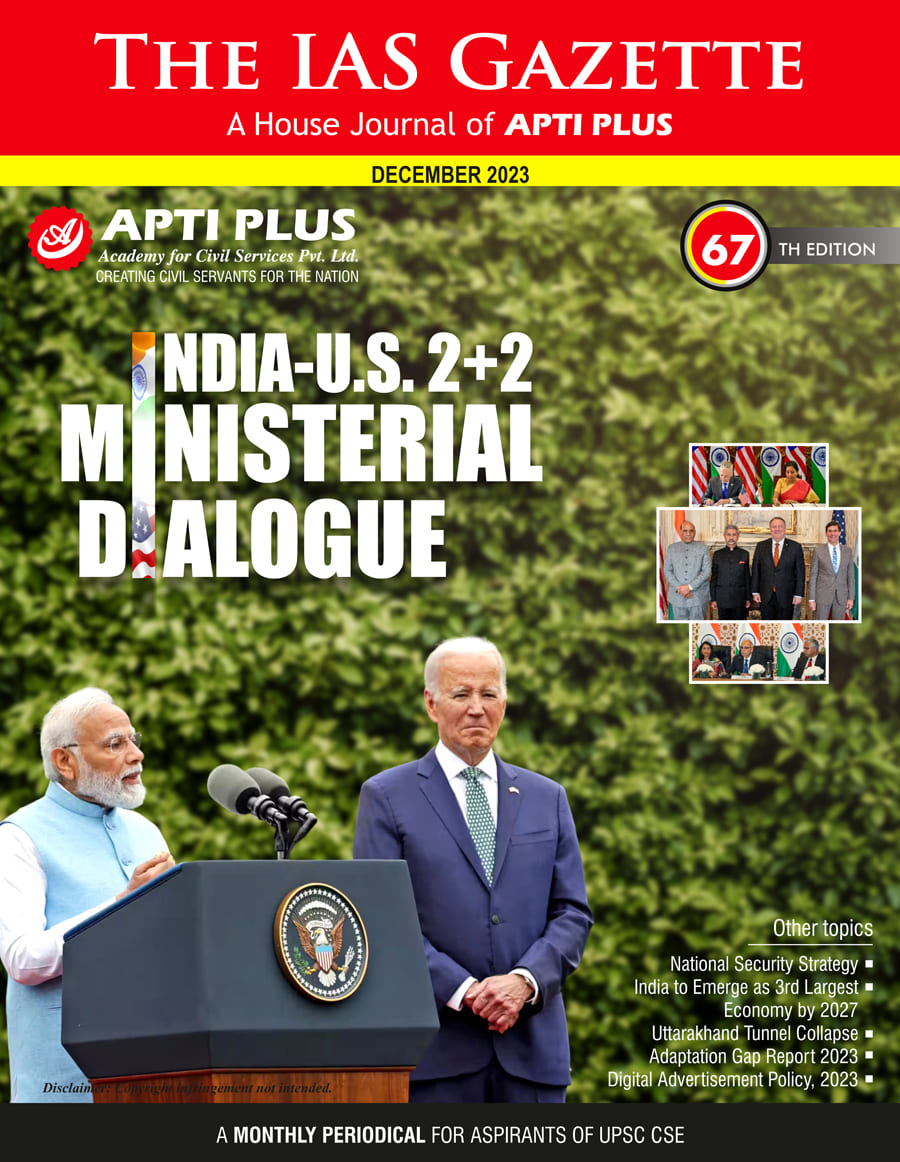
Viksit Bharat Sankalp Yatra
Context
- Information and Broadcasting Minister Anurag Singh Thakur has said that a record 15 crore people have joined the Vikshit Bharat Sankalp Yatra so far since its launch in November last year.
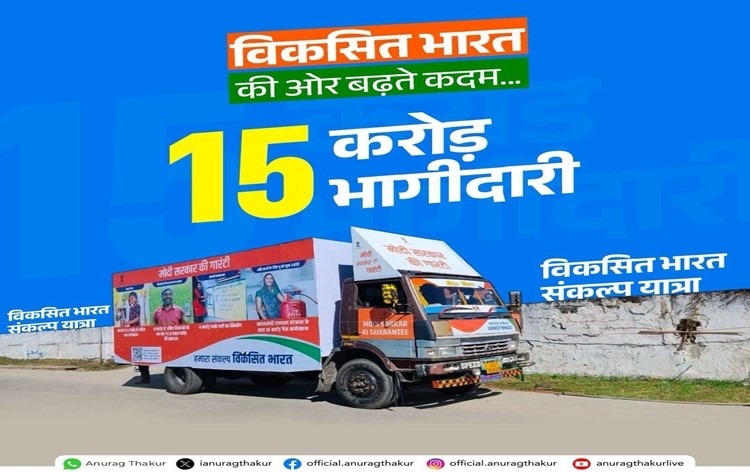
Key Details:
- In a social media post, Mr. Thakur said that to make India develop by the year 2047, PM Modi started the Viksit Bharat Sankalp Yatra, which people are joining with enthusiasm.
- He added that this trust will continue to grow, connect Indians with public welfare schemes, and help in realising the resolve of a developed India.
About Viksit Bharat Sankalp Yatra:
- It is a government initiative aimed at raising awareness about and monitoring the implementation of various flagship central schemes across India. These schemes include Ayushman Bharat, Ujjwala Yojana, PM Suraksha Bima, PM SVANidhi, and others.
- The program is a collaborative effort involving various Union ministries and state governments.
- It was flagged off by the Prime Minister on December 16, with the initial launch in Rajasthan, Madhya Pradesh, Chhattisgarh, Telangana, and Mizoram—states where recent Assembly polls were held.
- The Yatra had started earlier in other states but was delayed in these five states due to the Model Code of Conduct being in place before the elections.
- The Yatra began on November 15 from Khunti, Jharkhand. In just one month, it reached over 2.50 crore citizens across 68,000 Gram Panchayats in the country.
The program has four primary objectives:
- Reaching out to the vulnerable: The Yatra aims to identify and connect with individuals who are eligible for various government schemes but have not yet availed of the benefits.
- Dissemination of information and generating awareness: The initiative focuses on spreading information about government schemes and creating awareness among the public.
- Interaction with beneficiaries through personal stories/experience sharing: The Yatra involves engaging with beneficiaries of government schemes, allowing them to share their personal stories and experiences with the implemented programs.
- Enrollment of potential beneficiaries: During the Yatra, efforts are made to enrol potential beneficiaries by collecting details and information from participants.
https://newsonair.gov.in/News?title=Viksit-Bharat-Sankalp-Yatra-reaches-more-than-15-crore-people-in-60-days&id=475359
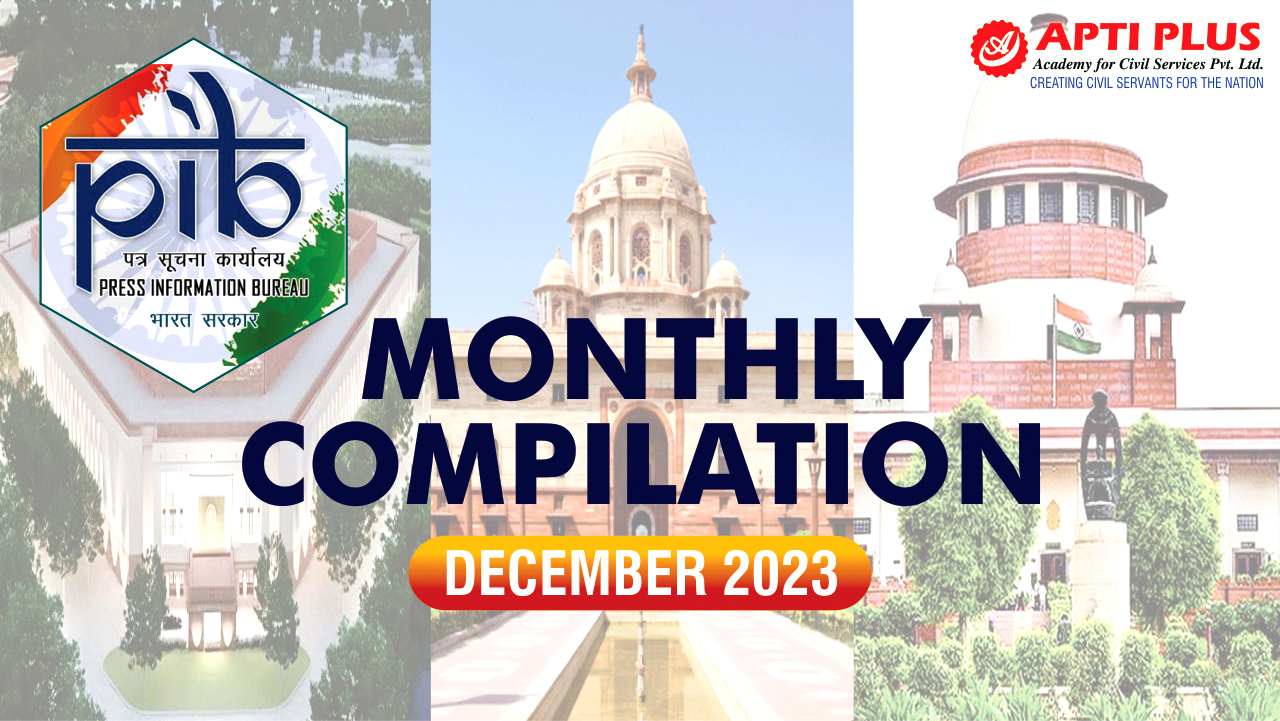
12th General Assembly of the Asian Buddhist Conference for Peace
Context
- Vice President Jagdeep Dhankhar has said that the world today faces challenges like climate change, conflict, terrorism and poverty which are universal and can be addressed by common resolve and collaborative and collective approach.
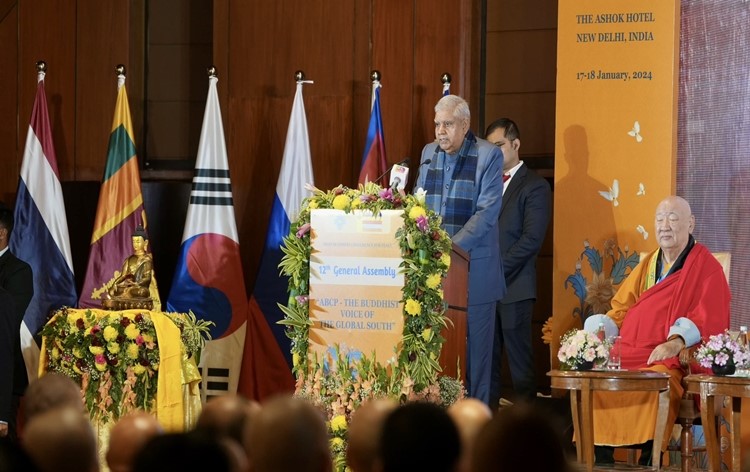
Disclaimer: Copyright infringement is not intended
Details:
- The Vice President said, violence has never generated unity and peace has never led to divisions. He said, that across the continent, Buddhist Stupas stand as silent testaments to Buddha's enduring wisdom.
- Mr Dhankhar said, the principles of Bhagwan Buddha are no less than a beacon of hope and light to catalyse convergence of all stakeholders on a common platform. He said, In a world yearning for harmony, Buddha's light shines brightest.
- 12th General Assembly under the theme: "ABCP - The Buddhist Voice of Global South."
The ABCP: A Beacon for Peace
- Established in 1969, the ABCP has grown into a voluntary movement of Buddhists across Asia, tirelessly working to foster peace, social and economic progress, justice, and human dignity.
- Union Minister of Earth Sciences Kiren Rijiju is set to grace the opening ceremony, adding an extra layer of prestige to the event.
- The organization coordinates its efforts through its headquarters in Ulaanbaatar, Mongolia, and national centres dispersed across major Asian Buddhist countries.
Recognition and Contributions:
- The ABCP’s efforts have not gone unnoticed.
- The United Nations, in recognition of its contributions to peace, has not only accredited the organization as an NGO but also bestowed upon it the title of ‘Peace Messenger’.
- This title is a mark of the organization’s unwavering commitment to promoting the teachings of Lord Buddha on peace and universal humanity.
https://newsonair.gov.in/News?title=Vice-President-Jagdeep-Dhankhar-inaugurates-12th-General-Assembly-of-the-Asian-Buddhist-Conference-for-Peace&id=475376
The country celebrates Thiruvalluvar Day
Context
- The country is celebrating Thiruvalluvar Day today in honour of the Saint Poet Thiruvalluvar.
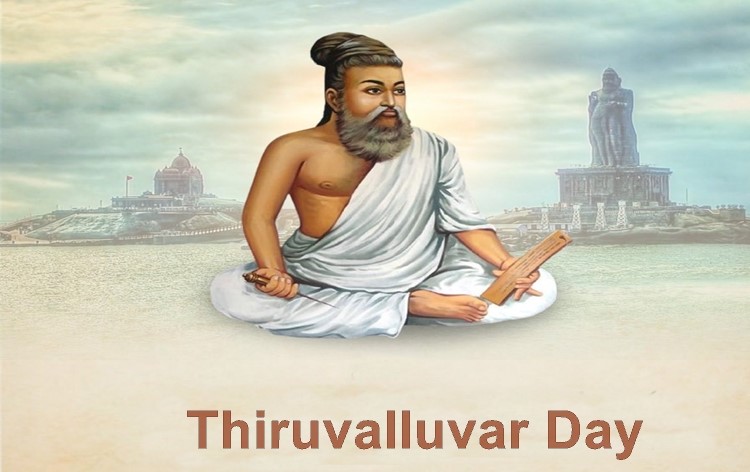
Details
- Prime Minister Narendra Modi said, Thiruvalluvar's timeless teachings inspire society to focus on virtue and integrity, fostering a world of harmony and understanding.
- The Prime Minister also reiterated the government's commitment to fulfilling Thiruvalluvar's vision by embodying the universal values he championed.
- Mr Modi said, Thiruvalluvar's profound wisdom in the Thirukkural guides us in several aspects of life.
About the Saint Poet Thiruvalluvar:
|
About
|
- Valluvar, also known as Thiruvalluvar, was an Indian poet and philosopher.
- However, there is limited authentic information about his life, and details are often inferred from his literary works.
|
Literary Works
- Tirukkuṟaḷ:
- Valluvar's primary work is the Tirukkuṟaḷ, a collection of 1330 couplets divided into three sections: moral and cosmic order (aram), political and economic matters (porul), and pleasure (inbam).
- The Tirukkuṟaḷ is highly regarded in Tamil culture and has been translated into numerous languages.
- Valluvar's other attributed works, such as Gnana Vettiyan and Pancharathnam, are considered later-dated texts by many scholars.
Philosophical Contributions
- Thiruvalluvar's philosophy emphasizes humanism, morality, and ethical conduct.
- Aram, the first section of Thirukkural, discusses virtues like righteousness, truth, and gratitude.
- Porul delves into economic and political principles, advocating justice, good governance, and fair trade.
- Thirukkural transcends religious and linguistic boundaries, offering universal principles applicable to various cultures and societies.
https://newsonair.gov.in/News?title=Country-celebrates-Thiruvalluvar-Day-in-honour-of-the-Saint-Poet-Thiruvalluvar&id=475291
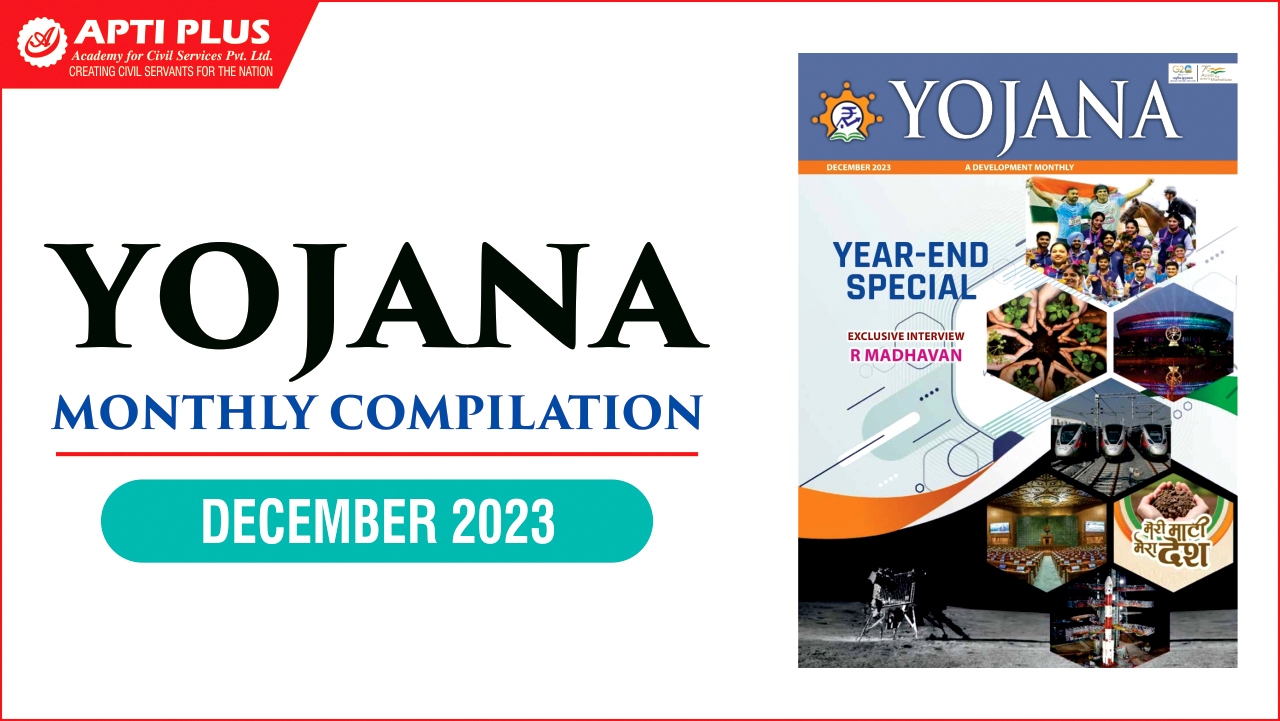
Rare Tibetan Brown Bear Discovered in Sikkim
Context
- In the first-ever confirmed record of the Tibetan brown bear (Ursus arctos pruinosus) in India, camera traps installed by the Sikkim Forest Department and WWF-India recorded this rare species in the high-altitudes of North Sikkim.

Details:
- This discovery adds a new subspecies to the mammal diversity of the country.
- Over the last many decades during interactions with the Dokpas - the nomadic herders from the high-altitude areas of Tso Lhamo plateau and Muguthang, there was always a mention of a large unidentified animal stealing sugar and oil stored in the herder camps.
- This creature, due to its elusive nature, has also inspired the folklore of the Yeti across the Himalayas
About Tibetan brown bear:
|
About
|
- The Tibetan brown bear also known as the Tibetan blue bear is one of the rarest subspecies of bears in the world and is rarely sighted in the wild.
- It is uniquely adapted to the harsh conditions of the Tibetan Plateau. Until now, there were only a few confirmed records from Nepal, Bhutan, and the Tibetan plateau.
- Consequently, it has been accorded the highest protection status under the Wildlife (Protection) Act, 1972 by listing it under Schedule-I.
- It is also listed in Appendix I of the Convention on International Trade in Endangered Species (CITES) as a protected species.
- It is an omnivore with its diet generally consisting of marmots and alpine vegetation. This rare bear is very different from the more commonly found Himalayan Black Bear in terms of its appearance, habitat, and behaviour.
- It inhabits high-altitude alpine forests, meadows, and steppe above 4000 m. Also, it is very shy of human contact and therefore very seldom observed. In contrast, the Himalayan Black Bear has a distinctive ‘V’ shaped white chest mark, inhabits temperate forests below 4000 m, and comes in frequent contact with humans often resulting in conflict.
|
https://newsonair.gov.in/News?title=Rare-Tibetan-Brown-Bear-Discovered-in-Sikkim&id=475167









